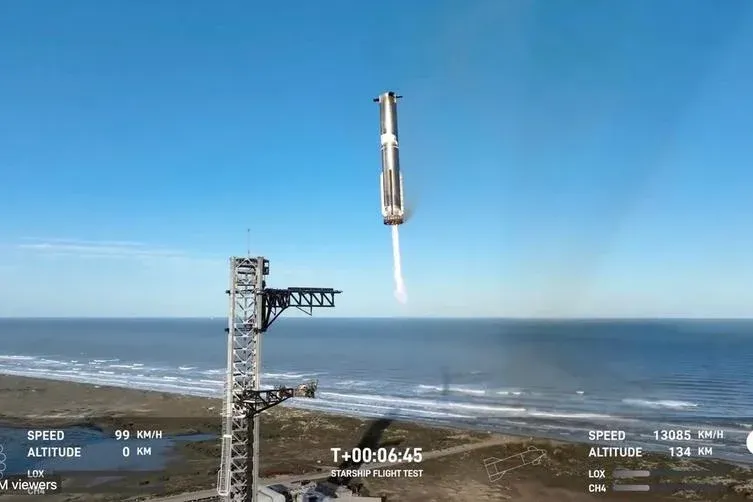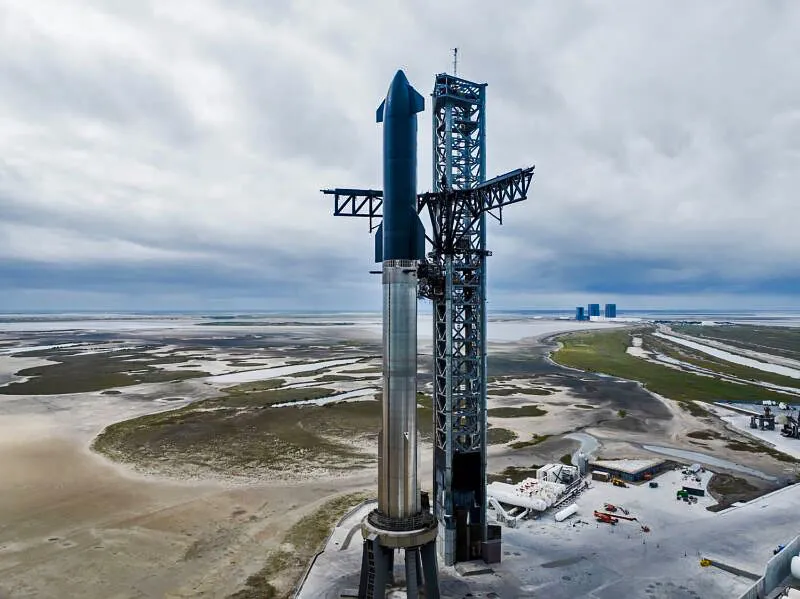The Future of Space Exploration: The Role of SpaceX’s Starship

The future of space exploration is being reshaped before our eyes, and at the forefront of this transformation is SpaceX’s Starship.
Anúncios
This colossal spacecraft, designed to carry humans and cargo to the Moon, Mars, and beyond, represents a bold leap toward interplanetary travel.
But what does this mean for humanity’s quest to explore the cosmos?
Will Starship live up to its promise, or is it another ambitious dream destined to face setbacks?
Let’s delve into the possibilities and challenges.
Why Starship Matters: A Game-Changer for Space Travel
1. Reusability: The Key to Cost Efficiency
One of the most revolutionary aspects of Starship is its fully reusable design.
Traditional rockets are single-use, making space travel prohibitively expensive.
Starship, however, aims to drastically reduce costs by being reusable, much like an airplane.
According to SpaceX, a single Starship launch could cost as little as $2 million—a fraction of the $60 million price tag for a Falcon 9 launch.
This affordability could democratize access to space, opening doors for scientific research, commercial ventures, and even space tourism.
Moreover, the reusability of Starship could lead to more frequent launches, accelerating the pace of space exploration.
As costs decrease, more organizations and countries may participate in space missions, creating a more vibrant space economy.
2. Payload Capacity: Unprecedented Scale
Starship’s payload capacity is staggering.
It can carry up to 100 metric tons, enough to transport large satellites, space station modules, or even entire habitats for future Mars colonies.
This capability positions Starship as a cornerstone for ambitious missions, such as NASA’s Artemis program, which aims to return humans to the Moon by 2025.
In addition to supporting governmental missions, Starship could facilitate private endeavors, allowing companies to launch large-scale projects in space.
This could include everything from building infrastructure on the Moon to deploying massive telescopes that enhance our understanding of the universe.
3. Interplanetary Ambitions: Mars and Beyond
Elon Musk’s vision for Starship extends far beyond Earth’s orbit.
The spacecraft is designed to support long-duration missions, including the colonization of Mars.
With its ability to carry up to 100 passengers, Starship could one day serve as humanity’s interplanetary ferry, making the future of space exploration a multi-planetary reality.
Additionally, Musk envisions a self-sustaining city on Mars, which would require not only transportation but also infrastructure development.
The prospect of human settlement on another planet ignites the imagination and raises questions about the long-term survival of humanity.
+ Cassini Probe: Revolutionary Discoveries About Saturn and Its Moons
Challenges and Controversies: Can Starship Deliver?
1. Technical Hurdles
Despite its promise, Starship faces significant technical challenges.
The spacecraft relies on the Raptor engine, which uses a complex methane-based propulsion system.
While methane is more efficient and sustainable than traditional fuels, it also introduces new engineering complexities.
Additionally, Starship’s massive size—standing at 120 meters tall—requires unprecedented precision in manufacturing and assembly.
This scale presents unique challenges in terms of logistics and transportation of components.
Moreover, as the technology matures, ongoing testing and iteration will be crucial to ensure reliability and safety for crewed missions.
2. Regulatory and Safety Concerns
SpaceX’s rapid development pace has raised eyebrows among regulators and safety experts.
The Federal Aviation Administration (FAA) has scrutinized the company’s testing protocols, particularly after several high-profile explosions during early Starship prototypes.
Ensuring the safety of crewed missions will be critical to gaining public and regulatory trust.
Furthermore, the regulatory landscape for space travel is still evolving, and companies like SpaceX may face new challenges as they push boundaries.
Public perception of safety will play a significant role in the acceptance of commercial space travel.
3. Environmental Impact
While Starship’s reusability is environmentally friendly compared to disposable rockets, its launches still produce significant carbon emissions.
Moreover, the production of methane fuel requires energy-intensive processes.
Balancing progress with sustainability will be a key challenge for SpaceX and the broader space industry.
As public awareness of climate change grows, companies will need to demonstrate their commitment to reducing their environmental footprint.
Innovative solutions, such as using renewable energy for fuel production, could help mitigate some of these concerns.

The Broader Implications: How Starship Shapes the Future
1. Accelerating Scientific Discovery
Starship’s capabilities could revolutionize scientific research.
Its ability to carry large payloads enables the deployment of advanced telescopes, such as the next-generation James Webb, and the establishment of lunar and Martian research stations.
These advancements could unlock new insights into our solar system and beyond.
Furthermore, the potential for collaborative missions with international space agencies could enhance the scope of scientific inquiry.
By pooling resources and expertise, humanity could tackle complex questions about the universe more effectively.
2. Economic Opportunities
The commercial potential of Starship is immense.
From satellite deployment to space tourism, the spacecraft could spawn entirely new industries.
Companies like Axiom Space are already planning private space stations, while others are exploring asteroid mining.
Starship’s affordability and capacity could make these ventures economically viable.
Moreover, as the space economy expands, job opportunities in STEM fields will likely increase, fostering innovation and technological advancement.
++ Parker Solar Probe: The NASA Spacecraft That Broke Records by Touching the Sun
3. Global Collaboration and Competition
Starship’s success could inspire a new era of international collaboration in space exploration.
However, it could also intensify competition, particularly with China’s rapidly advancing space program.
The future of space exploration may hinge on whether nations choose to cooperate or compete.
Collaborative missions could lead to shared advancements in technology and knowledge, benefiting all involved.
Conversely, a competitive landscape could drive innovation but may also lead to geopolitical tensions.

Starship vs. Competitors: A Comparative Analysis
| Feature | SpaceX Starship | NASA SLS | Blue Origin New Glenn |
|---|---|---|---|
| Payload Capacity | 100 metric tons | 95 metric tons | 45 metric tons |
| Reusability | Fully reusable | Partially reusable | Fully reusable |
| Cost per Launch | ~$2 million (projected) | ~$2 billion | ~$100 million (estimated) |
| Primary Mission Focus | Mars colonization | Moon missions | Commercial satellites |
The Road Ahead: What’s Next for Starship?
SpaceX has ambitious timelines for Starship.
The company plans to conduct its first orbital test flight in 2023, followed by crewed missions to the Moon and Mars in the coming decade.
However, these goals are contingent on overcoming technical, regulatory, and financial hurdles.
Upcoming Milestones
- Orbital Test Flight: A critical step to demonstrate Starship’s capabilities.
- Lunar Missions: Starship has been selected by NASA as the lunar lander for the Artemis program.
- Mars Missions: SpaceX aims to send an uncrewed Starship to Mars by 2024, with crewed missions planned for the 2030s.
As these milestones approach, the world will be watching closely, eager to see if SpaceX can deliver on its promises.
The outcomes of these missions could significantly influence public perception and investment in future space endeavors.
The Ethical and Philosophical Questions
As we push the boundaries of space exploration, we must also grapple with ethical questions.
Who owns space resources?
How do we ensure equitable access?
And what responsibilities do we have to protect extraterrestrial environments?
These questions will shape the future of space exploration and require global dialogue.
As private companies like SpaceX enter the arena, the need for international agreements and regulations becomes even more pressing.
Discussions around space ethics must include diverse perspectives to ensure that exploration benefits all of humanity.
For more insights on the future of space exploration, check out NASA’s Artemis Program.
Conclusion: A New Chapter in Human History
SpaceX’s Starship represents a bold vision for the future of space exploration.
Its potential to reduce costs, increase payload capacity, and enable interplanetary travel could transform how we explore and inhabit the cosmos.
However, significant challenges remain, from technical hurdles to ethical dilemmas.
As we stand on the brink of a new era, one thing is clear: the future of space exploration will be defined by innovation, collaboration, and a shared commitment to pushing the boundaries of what’s possible.
Starship is not just a spacecraft; it’s a symbol of humanity’s enduring curiosity and ambition.
Will it succeed?
Only time will tell, but the journey promises to be as thrilling as the destination.
By examining the opportunities and challenges of SpaceX’s Starship, this article aims to provide a comprehensive perspective on its role in shaping the future of space exploration.
Whether you’re a space enthusiast or a skeptic, one thing is certain: the stars are no longer out of reach.
